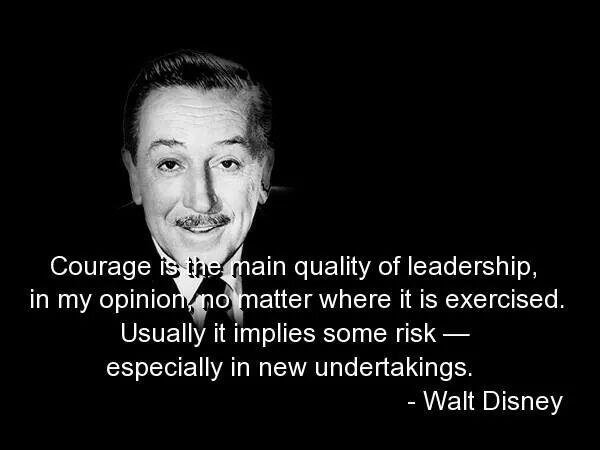3 TYPES OF COURAGE LEADERS NEED
In my last blog post I suggested courageous leadership is self-mastery and is one of the critical factors to being a leader.
Stephen Covey talked about the fact that the first habit is to BE PROACTIVE. This means taking responsibility for ourselves – our actions, our results and our growth. This takes courage to confront our tendencies to blame, to avoid failure, to engage in appearance management.
- Without courage you won’t be pushing yourself or others out of your comfort zone and trying new things.
- Without courage you will hit a ceiling and plateau.
- Without courage you can’t make a real, long-term difference.
- Without courage you can’t have the right conversations that lead to change.
- Without courage you won’t even get off the starting block as a leader because you will be rooted to status quo and fear.
Courage is acting in the face of fear. Sitting with the discomfort but working through it, not around it.
The curious thing I have discovered is not all courage’ is equal. There are some areas where I have loads of courage and other circumstances that I tend to avoid. I’ve been pondering why I can have the courage to start my own business and yet sometimes I lack the courage to have a hard conversation with a loved one. Why I can create a new leadership program and deliver it, but sometimes I find myself procrastinating about learning something new with my database because I feel like it is beyond me.
I like how Bill Treasurer has identified three distinct types of courage that a leader can display and needs.
He calls these three different forms of courage the Three Buckets of Courage. I want to unpack them for us.
TRY COURAGE
When leaders talk about wanting workers to “step up to the plate,†it is Try Courage that they are referring to. Try Courage is the courage of initiative and action. You often see Try Courage when people make ï¬rst attempts – for example, whenever you see someone attempt new, skill-stretching, or pioneering tasks. Someone who volunteers to lead a tough or risky project is demonstrating Try Courage.
This type of courage is all about pushing out of comfort zones and feeling incompetent for a while. To do that we have to overcome inertia. One of the most powerful ways to do that is make more obvious the problem’ of not trying something new, to articulate the pain’ of not changing.
To work out where you might need Try courage ask these questions: Where am I playing it safe at work? What is it costing me?
TRUST COURAGE
Trust Courage is the courage that it takes to relinquish control and rely on others. When leaders talk of wanting employees to embrace company changes more willingly or to follow directives more enthusiastically, it is more TRUST Courage that they want employees to have. When Trust Courage is present, people give each other the beneï¬t of the doubt, instead of questioning the motives and intentions of those around them. TRUST Courage isn’t about taking charge (as with Try Courage), but about following the charge of others.
Many leaders find it challenging to let go of control.
If you want to build this type of courage, identify two people who are great trust-builders. What do they do that you can apply?
TELL COURAGE
Tell Courage is the courage of voice and involves speaking with candour and conviction, especially when the opinions expressed run counter to the group’s. To preserve their safety, workers often agree too much and speak out too little. When Tell Courage is activated, it causes workers to assert themselves more willingly and conï¬dently. You see Tell Courage at work when employees tactfully but truthfully provide tough feedback, even to you, their manager. You also see it when workers raise their hands and ask for help, or when they tell you about mistakes they’ve made before you ask.
If you want to grow in Tell courage, list two examples when you didn’t speak up at work, but should have. If you could relive those examples, what would you do differently?
Using the Three Buckets of Courage as a framework for understanding and categorising courageous behaviour helps make courage, as a concept, more graspable.
Parsing courage into three behavioural buckets allows us to discriminate the different ways we have been courageous in the past and are capable of being in the future:
- For example, think of the scariest or most uncomfortable moments in your career thus far. Weren’t you trying something new, trusting someone else’s lead, and/or telling the truth about a conviction you were upholding?
- Now think about the single biggest career goal you have in front of you right now. To achieve your goal, won’t it involve exercising more TRY, TRUST, or TELL Courage (or some combination of all three)?
WHICH TYPE OF COURAGE DO YOU GENERALLY DISPLAY?
WHICH TYPE OF COURAGE DO YOU WANT TO GROW IN?
Let’s get really practical. Read the following 5 traits a courageous leader will need to display at one time or another. Identify what bucket of courage they fit into. Help this list challenge and spur you on.
- Confront reality head-on. Ditch the rose-coloured glasses and face the facts about the state of your organisation and business. Only by knowing the true current state can you lead your team to a better place.
- Seek feedback and listen. We all have blind spots that impact the way we interact with others. Unfiltered 360-degree feedback is not always easy to hear, but it can breathe new life into your relationships and leadership style if you listen and act.
- Say what needs to be said.Real conversations can be awkward and uncomfortable, especially if conflict is involved. Having crucial conversations helps cut through the smoke and move through issues. This also means having the courage to put your opinions on the table, even if they are unpopular.
- Encourage push-back. Many leaders feel pressure to have all the answers. By encouraging constructive dissent and healthy debate, you reinforce the strength of the team and demonstrate that in the tension of diverse opinions lies a better answer.
- Take action on performance issues. Confronting people issues is hard, which is why so many leaders ignore them until they become a toxic threat to the team or company’s performance. By taking swift action to reassign or exit underperforming employees, you are helping yourself, the team and organization.Â
“Courage is what it takes to stand up and speak; courage is also what it takes to sit down and listenâ€. Winston Churchill
 Â
If you want to develop more courage and you need support to do it, contact me about some leadership coaching. Sometimes all we need is someone to walk alongside us and untangle our fears and get clear on the next steps of the path.

